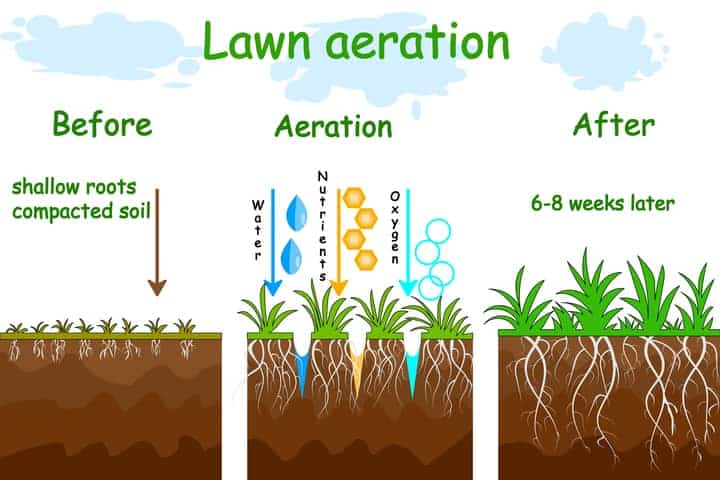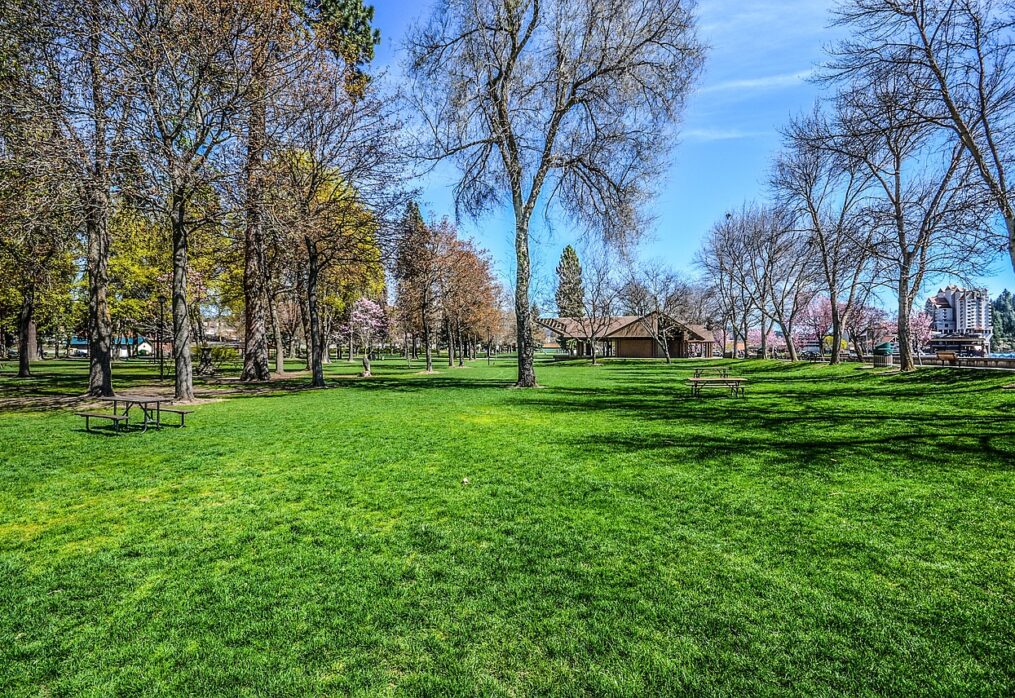Best Practices for Maintaining a Healthy Natural Lawn Grass
Maintaining a healthy natural lawn is essential to ensuring a vibrant, sustainable outdoor space. Whether you’ve already established your natural grass or are considering switching to one, keeping it in top condition requires regular care and attention. Unlike traditional lawns that often require synthetic fertilizers and heavy watering, natural lawns can thrive with less intervention—provided you follow the best practices for lawn care. In this guide, we’ll cover the most effective techniques for maintaining healthy natural lawn grass, focusing on mowing, fertilizing, aerating, and watering. With these tips, you’ll have a lush, green lawn that’s both environmentally friendly and easy to care for.
Why Focus on Maintaining Healthy Natural Lawn Grass?
Natural lawn grasses are designed to adapt to their local environment, requiring less water and fewer chemical inputs. However, they still need maintenance to stay healthy and resilient. Proper care helps your lawn: – Thrive without excessive water or chemicals – Resist pests, diseases, and weed invasions – Support local wildlife and ecosystems – Enhance the overall beauty and health of your yard By following the right practices, you can maintain a natural lawn that is both low-maintenance and sustainable.
-
Mowing: Keep Your Grass at the Right Height
Mowing is one of the most important tasks in maintaining a healthy natural lawn. How you mow, when you mow, and how frequently you mow all play a role in the health of your grass. Here’s what you need to know about mowing your natural lawn:
# Set the Mower to the Right Height Different types of grass require different mowing heights. In general, it’s best to keep your natural grass a bit taller than traditional turf. This helps promote stronger root systems and allows the grass to shade out weeds. For most natural grasses, such as fescue, Bermuda, or buffalo grass, aim for a mowing height of about 2.5 to 3.5 inches.
# Don’t Over-Mow It’s important not to mow your grass too short. Cutting your grass too low stresses the plants, making them more vulnerable to pests, diseases, and drought. Follow the “one-third rule,” which states that you should never remove more than one-third of the grass blade in a single mowing session.
# Mow When Dry Mowing wet grass can lead to uneven cuts and clumping, which can suffocate the lawn. Aim to mow when the grass is dry, usually in the late morning or early afternoon.
-
Fertilizing: Feed Your Grass Naturally
Natural grass requires nutrients to grow, but the key is to use organic and environmentally friendly methods that won’t harm the ecosystem or pollute the soil. Proper fertilizing will help maintain healthy natural lawn grass by promoting strong root development and rich green color.
# Use Organic Fertilizers Instead of synthetic fertilizers, opt for organic options such as compost, manure, or other natural lawn fertilizers. Organic fertilizers release nutrients slowly, providing a steady food supply for your grass without the risk of over-fertilizing or damaging the soil. They also improve soil structure and increase beneficial soil microbes.
# Fertilize Based on Your Grass Type and Season The timing and frequency of fertilization will depend on the type of grass you have and the local climate. For warm-season grasses like Bermuda or Zoysia, fertilize in late spring or early summer when the grass is actively growing. For cool-season grasses like fescue or ryegrass, fertilize in early fall and again in late winter to encourage growth during the cooler months.
# Aerate Before Fertilizing Aerating your lawn before applying fertilizer allows nutrients to penetrate deeper into the soil. Aeration breaks up compacted soil and creates small holes that improve water and nutrient absorption.
-
Aerating: Improve Soil Health and Grass Growth
Aeration is the process of creating small holes in the soil to allow air, water, and nutrients to reach the grassroots. Over time, the soil can become compacted from foot traffic, mowing, and other activities, which reduces the space available for the roots to grow.
# Why Aeration Matters Aerating your lawn helps: – Improve soil structure – Enhance water infiltration – Promote deeper root growth – Reduce thatch buildup – Increase the effectiveness of fertilization
# When and How to Aerate The best time to aerate your lawn depends on the type of grass you have. For warm-season grasses like Bermuda or Zoysia, aerate in late spring or early summer when the grass is growing most vigorously. For cool-season grasses like fescue, aerate in early fall to ensure recovery before winter. You can rent or purchase an aerator, or hire a professional to perform this task. Aeration once a year is usually sufficient for most lawns, but if your soil is especially compacted, you may need to aerate more frequently. 
-
Watering: Provide the Right Amount of Moisture
One of the biggest benefits of natural grass is its ability to survive with less water than traditional lawns. However, watering still plays a crucial role in maintaining a healthy lawn, especially during dry spells. Here’s how to water your natural lawn properly:
# Water Deeply and Infrequently Instead of watering frequently for short periods, aim to water deeply and less often. This encourages the grass roots to grow deeper into the soil, making them more drought-resistant. Watering once or twice a week is usually sufficient, but if you have sandy soil, you may need to water more frequently.
# Water Early in the Morning To minimize evaporation and ensure that the grass receives the maximum benefit from each watering, water your lawn early in the morning. This allows the water to soak into the soil before the heat of the day, and it reduces the risk of fungal diseases that can thrive in damp conditions.
# Adjust Watering Based on the Weather During the cooler months, natural grasses generally require less water. Be sure to adjust your watering schedule based on the weather, and stop watering altogether during rainy periods to avoid over-watering.
-
Weed Control: Prevent Invasions Without Chemicals
Weeds can be a major problem for natural lawns, but the good news is that many natural grass varieties are hardy and can resist weed invasions with proper care. Here are some eco-friendly methods for controlling weeds:
# Mulch and Grass Clipping After mowing, leave grass clippings on the lawn as mulch. This not only helps retain moisture in the soil but also suppresses weed growth by blocking sunlight from reaching weed seeds. Similarly, adding a layer of organic mulch around trees, shrubs, or garden beds can help keep weeds in check.
# Hand-Pull Weeds For small weed problems, hand-pulling is an effective solution. Be sure to remove weeds by the root to prevent regrowth. If you notice a larger infestation, consider using organic or natural herbicides that are safer for your lawn and the environment.
-
Pest and Disease Management
A healthy lawn is less likely to succumb to pests and diseases, but it’s important to monitor your natural grass regularly for any signs of trouble. If pests or diseases do occur, act quickly to prevent them from spreading. Here are a few tips: – Promote Healthy Soil: Healthy soil encourages strong grass that can resist pests and diseases. Use organic fertilizers and compost to improve soil health. – Encourage Beneficial Insects: Some insects, such as ladybugs and predatory beetles, can help keep pest populations in check. – Spot Treatment: For localized pest problems, use organic pest control solutions like neem oil or diatomaceous earth.
Conclusion
Maintaining a healthy natural lawn requires ongoing care, but with the right practices, it’s entirely possible to keep your grass vibrant, resilient, and eco-friendly. By following these best practices—mowing at the right height, fertilizing naturally, aerating, watering appropriately, and controlling weeds—you can ensure your lawn remains healthy throughout the year. Remember that maintaining a natural lawn isn’t about perfection; it’s about creating a sustainable, low-maintenance outdoor space that supports local wildlife and minimizes environmental impact. By sticking to these best practices, you’ll enjoy a beautiful lawn that’s good for the planet and easy to maintain. Happy lawn care!
Contact Us Today!
Ready to transform your lawn? Contact Balaji Nursery today at www.balajinursery.org or call us for a consultation at 9354173113 / 8766234417 Let us help you create the lawn of your dreams!
Last Updated on 1 year ago by Anjali Mehra Ph.D. in Horticulture (Punjab Agricultural University)
- Best Lawn Grass for High-Footfall Religious Places in Punjab - December 29, 2025
- Why Lawn Grass Fails After Installation (Real Indian Case Studies) - December 25, 2025
- Nilgiri Grass vs Korean Grass – Price, Look & Maintenance Compared - December 23, 2025
